#LinkedHashSet
Explore tagged Tumblr posts
Text
LinkedHashSet Class in Java With Program Example
LinkedHashet is an implementation class of the Set interface which also extends the HashSet class. It was introduced in Java 1.4 version. It behaves in the same manner as HashSet except that it preserves or maintains the insertion order of elements inserted in the set. In simple words, It is an implementation of the set interface that stores and manipulates an ordered collection of elements. It…
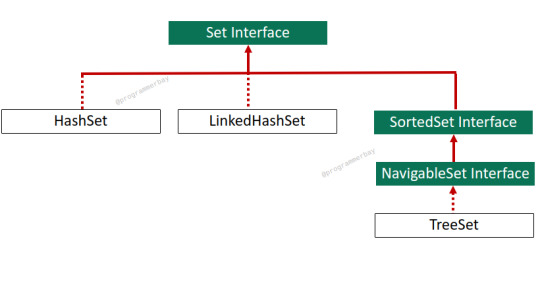
View On WordPress
#collection#collection framework#data structure#HashTable#java#java program#Linked List#LinkedHashSet
0 notes
Text
Youtube Video Ideas
I want to post videos about the Java basics of: - Stack - ArrayDeque - HashMap - HashSet - LinkedHashMap - LinkedHashSet - TreeMap - TreeSet - IdentityHashMap
Do you have any ideas for more content? Any other Java class I should dive into?
My Channel: youtube.com/@DoSomeDev
0 notes
Text
The Ultimate Guide to Java Collection

Java libraries are indispensable tools that streamline development by providing pre-written code for common tasks. "The Ultimate Guide to Java Libraries" explores a myriad of libraries that enhance Java programming, from handling data structures to implementing complex algorithms.
A key feature covered is collections in Java, which offer efficient ways to manage groups of objects, improving code efficiency and readability.
JAVATPOINT is a valuable resource for developers seeking in-depth tutorials and examples on using these libraries effectively. Leveraging these libraries can significantly reduce development time and improve application performance.
Overview of Java Collections
The Java Collections Framework includes interfaces, implementations, and algorithms. The core interfaces include Collection, List, Set, Queue, and Map, each serving different purposes.
Collection Interface:
The root interface of the framework, representing a group of objects known as elements. It is extended by List, Set, and Queue interfaces.
List Interface:
An ordered collection that allows duplicate elements. Common implementations are ArrayList, LinkedList, and Vector. Lists are ideal when you need to access elements by their index.
ArrayList: Resizable array implementation, offering constant-time positional access but slower for insertion and deletion.
LinkedList: Doubly-linked list implementation, providing efficient insertion and deletion but slower access time.
Vector: Synchronized version of ArrayList, rarely used due to performance overhead.
Set Interface:
A collection that does not allow duplicate elements. It models mathematical sets and provides implementations like HashSet, LinkedHashSet, and TreeSet.
HashSet: Uses a hash table for storage, offering constant-time performance for basic operations.
LinkedHashSet: Maintains insertion order, slightly slower than HashSet.
TreeSet: Implements the SortedSet interface, ensuring elements are in ascending order, based on their natural ordering or a specified comparator.
Queue Interface:
Designed for holding elements prior to processing, typically ordered in a FIFO (first-in-first-out) manner. Common implementations include LinkedList, PriorityQueue, and ArrayDeque.
PriorityQueue: Elements are ordered according to their natural ordering or a provided comparator, useful for creating priority-based tasks.
ArrayDeque: Resizable-array implementation of the Deque interface, providing efficient insertion and deletion from both ends.
Map Interface:
Represents a collection of key-value pairs, where each key maps to one value. Popular implementations are HashMap, LinkedHashMap, and TreeMap.
HashMap: Provides constant-time performance for basic operations, assuming a good hash function.
LinkedHashMap: Maintains a doubly-linked list of its entries, preserving the order of insertion.
TreeMap: Implements the SortedMap interface, ensuring keys are in ascending order.
Advantages of Java Collections Framework
Reduces Programming Effort: With a set of ready-made data structures and algorithms, JCF eliminates the need for developers to implement complex data structures from scratch.
Increases Program Speed and Quality: Standardized interfaces and optimized implementations ensure high performance and reliability.
Interoperability: Collections can be easily passed across APIs, reducing the complexity of integration.
Ease of Maintenance: Well-documented and widely-used classes make it easier for developers to maintain and enhance code.
Common Algorithms in JCF
Java Collections Framework includes various algorithms to perform routine tasks, such as sorting, searching, and shuffling. These algorithms are static methods in the Collections utility class.
Sorting: Collections.sort(List list), sorts the specified list into ascending order.
Shuffling: Collections.shuffle(List list), randomly permutes the elements in the list.
Searching: Collections.binarySearch(List> list, T key), performs binary search on a sorted list.
Conclusion
The Java Collections Framework is indispensable for any Java developer. It offers a standardized and efficient way to manage groups of objects, making code more robust and maintainable.
By leveraging the various interfaces and implementations, such as lists, sets, queues, and maps, developers can handle data structures effectively.
Understanding collections in Java, as detailed on resources like JAVATPOINT, is crucial for building high-performance applications. Whether you're a beginner or an experienced developer, mastering Java collections will significantly enhance your programming capabilities.
0 notes
Text
Unraveling the Power of Java Collections Framework and Interfaces
In the realm of Java programming, understanding the intricacies of the Java Collections Framework and Interfaces is pivotal for building robust and efficient applications. Let's delve into the essentials, including Java PriorityQueue and sets in Java, to harness the full potential of these foundational components.
Java Collections Framework: A Comprehensive Toolbox
The Java Collections Framework is a powerhouse of data structures and algorithms, offering a versatile toolbox for developers. It provides interfaces and classes for managing and manipulating groups of objects, ensuring flexibility and efficiency in Java programming.
Java Interfaces: Enabling Polymorphism and Abstraction
Java Interfaces play a crucial role in achieving polymorphism and abstraction in programming. By defining a set of methods that implementing classes must adhere to, interfaces allow developers to create flexible and interchangeable components within their codebase.
Java PriorityQueue: Prioritizing Efficiency
Java PriorityQueue, a class within the Collections Framework, stands out as a specialized queue implementation. It orders elements based on their natural ordering or according to a specified comparator, enabling developers to prioritize and efficiently manage tasks in their applications.
Sets in Java: Uniqueness and Order
Sets in Java, a part of the Collections Framework, ensure uniqueness of elements within a collection. Whether using HashSet, TreeSet, or LinkedHashSet, developers can leverage sets to manage distinct elements and, in some cases, maintain a specific order.
Conclusion: Elevating Java Programming Proficiency
Mastering the Java Collections Framework, Java Interfaces, PriorityQueue, and sets in Java empowers developers to create scalable and well-organized applications. These foundational concepts not only streamline data management but also enhance the overall efficiency and maintainability of Java code. As you explore these elements, you unlock the potential to elevate your proficiency in Java programming, creating more robust and sophisticated software solutions.
1 note
·
View note
Text
Коллекции?
Если коротко, то
Существует несколько типов коллекций (интерфейсов):
List - упорядоченный список. Элементы хранятся в порядке добавления, проиндексированы.
Queue - очередь. Первый пришёл - первый ушёл, то есть элементы добавляются в конец, а удаляются из начала.
Set - неупорядоченное множество. Элементы могут храниться в рандомном порядке.
Map - пара ключ-значение. Пары хранятся неупорядоченно.
У них есть реализации.
Реализации List
ArrayList - самый обычный массив. Расширяется автоматически. Может содержать элементы разных классов.
LinkedList - элементы имеют ссылки на рядом стоящие элементы. Быстрое удаление за счёт того, что элементы никуда не сдвигаются, заполняя образовавшийся пробел, как в ArrayList.
Реализации Queue
LinkedList - рассказано выше. Да, оно также реализует интерфейс Queue.
ArrayDeque - двунаправленная очередь, где элементы могут добавляться как в начало так и в конец. Также и с удалением.
PriorityQueue - элементы добавляются в сортированном порядке (по возрастанию или по алфавиту или так, как захочет разработчик)
Реализации Set
HashSet - элементы хранятся в хэш-таблице, в бакетах. Бакет каждого элемента определяется по его хэш-коду. Добавление, удаление и поиск происходят за фиксированное количество времени.
LinkedHashSet - как HashSet, но сохраняет порядок добавления элементов.
TreeSet - используется в том случает, когда элементы надо упорядочить. По умолчанию используется естественный порядок, организованный красно-чёрным деревом. (Нет, я не буду это здесь объяснять, не заставите)
LinkedList - рассказано выше. Да, оно также реализует интерфейс Queue.
ArrayDeque
Реализации Map
HashMap - то же самое что и HashSet. Использует хэш-таблицу для хранения.
TreeMap - тоже использует красно-чёрное дерево. Как и TreeSet, это достаточно медленно работающая структура для малого количества данных.
LinkedHashMap. Честно? Тяжеловато найти информацию про различия с LinkedHashSet, кроме того, что один - это Set, а второй - Map. Мда :/
А связи всего этого выглядят так
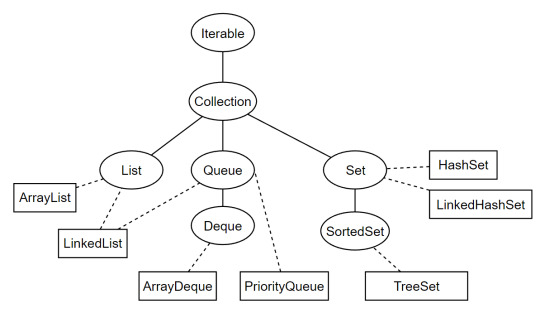
Овалы - интерфейсы; Прямоугольники - классы;
Здесь видно, что начало начал - интерфейс Iterable, ну а общий для всех интерфейс - Collection (Не путать с фреймворком Collections)
А где Map? а вот он
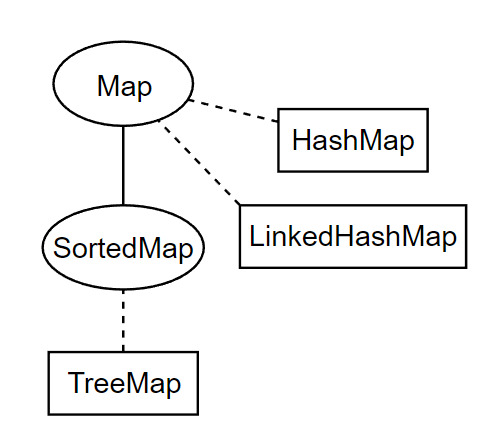
Map не наследуется от Collection - он сам по себе.
К этой теме также можно много чего добавить: устройство красно-черного дерева, работа HashSet'ов и HashMap'ов под капотом, сложность коллекций. Но это всё темы для следующих постов.
Ну, а пока надеюсь, что понятно.
#студент бормочет#List#Set#Queue#Map#ArrayList#LinkedList#ArrayDeque#PriorityOueue#HashMap#HashSet#LinkedHashMap#LinkedHashSet#TreeMap#TreeSet#как же много тегов#Коллекции
1 note
·
View note
Text
Set, HashSet, LinkedHashSet, and TreeSet in Java with Sample Programs | Java Collections
Set, HashSet, LinkedHashSet, and TreeSet in Java with Sample Programs | Java Collections
Get a nearer glimpse at Established, HashSet, LinkedHashSet, and TreeSet in Java with sample systems. [Video] by · Sep. 28, 21 · Java Zone · Presentation Resource url

View On WordPress
0 notes
Link
Клас LinkedHashSet розширює клас HashSet не додаючи ніяких нових методів. Працює він дещо довше за HashSet проте зберігає порядок в якому елементи додаються до нього. Відповідно це дозволяє організувати послідовну ітерацію вставлення та витягнення елементів... https://ukr-technologies.blogspot.com/2020/04/linkedhashset.html
0 notes
Text
Java Collections: EnumSet with Example
Java Collections: EnumSet with Example
Enumset is a special kind of Java Set which is optimized for storing enum constants. Because Java is a strongly typed language, an EnumSet stores exactly one type of enum constants. Since the universe (the range of permitted values)of enum type is always finite, an EnumSet can be optimized in ways that other Set implementations cannot be. A Java program should always use EnumSet when range of…
View On WordPress
0 notes
Text
The Collection Framework in Java
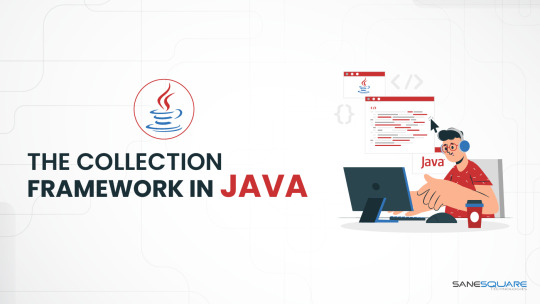
What is a Collection in Java?
Java collection is a single unit of objects. Before the Collections Framework, it had been hard for programmers to write down algorithms that worked for different collections. Java came with many Collection classes and Interfaces, like Vector, Stack, Hashtable, and Array.
In JDK 1.2, Java developers introduced theCollections Framework, an essential framework to help you achieve your data operations.
Why Do We Need Them?
Reduces programming effort & effort to study and use new APIs
Increases program speed and quality
Allows interoperability among unrelated APIs
Reduces effort to design new APIs
Fosters software reuse
Methods Present in the Collection Interface
NoMethodDescription1Public boolean add(E e)To insert an object in this collection.2Public boolean remove(Object element)To delete an element from the collection.3Default boolean removeIf(Predicate filter)For deleting all the elements of the collection that satisfy the specified predicate.4Public boolean retainAll(Collection c)For deleting all the elements of invoking collection except the specified collection.5Public int size()This return the total number of elements.6Publicvoid clear()This removes the total number of elements.7Publicboolean contains(Object element)It is used to search an element.8PublicIterator iterator()It returns an iterator.9PublicObject[] toArray()It converts collection into array.
Collection Framework Hierarchy
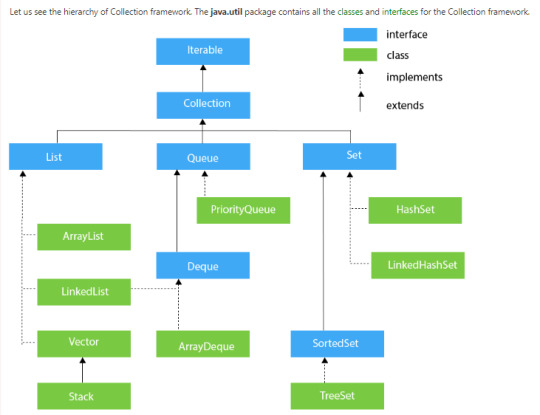
List Interface
This is the child interface of the collectioninterface. It is purely for lists of data, so we can store the ordered lists of the objects. It also allows duplicates to be stored. Many classes implement this list interface, including ArrayList, Vector, Stack, and others.
Array List
It is a class present in java. util package.
It uses a dynamic array for storing the element.
It is an array that has no size limit.
We can add or remove elements easily.
Linked List
The LinkedList class uses a doubly LinkedList to store elements. i.e., the user can add data at the initial position as well as the last position.
It allows Null insertion.
If we’d wish to perform an Insertion /Deletion operation LinkedList is preferred.
Used to implement Stacks and Queues.
Vector
Every method is synchronized.
The vector object is Thread safe.
At a time, one thread can operate on the Vector object.
Performance is low because Threads need to wait.
Stack
It is the child class of Vector.
It is based on LIFO (Last In First Out) i.e., the Element inserted in last will come first.
Queue
A queue interface, as its name suggests, upholds the FIFO (First In First Out) order much like a conventional queue line. All of the elements where the order of the elements matters will be stored in this interface. For instance, the tickets are always offered on a first-come, first-serve basis whenever we attempt to book one. As a result, the ticket is awarded to the requester who enters the queue first. There are many classes, including ArrayDeque, PriorityQueue, and others. Any of these subclasses can be used to create a queue object because they all implement the queue.
Dequeue
The queue data structure has only a very tiny modification in this case. The data structure deque, commonly referred to as a double-ended queue, allows us to add and delete pieces from both ends of the queue. ArrayDeque, which implements this interface. We can create a deque object using this class because it implements the Deque interface.
Set Interface
A set is an unordered collection of objects where it is impossible to hold duplicate values. When we want to keep unique objects and prevent object duplication, we utilize this collection. Numerous classes, including HashSet, TreeSet, LinkedHashSet, etc. implement this set interface. We can instantiate a set object with any of these subclasses because they all implement the set.
LinkedHashSet
The LinkedHashSet class extends the HashSet class.
Insertion order is preserved.
Duplicates aren’t allowed.
LinkedHashSet is non synchronized.
LinkedHashSet is the same as the HashSet except the above two differences are present.
HashSet
HashSet stores the elements by using the mechanism of Hashing.
It contains unique elements only.
This HashSet allows null values.
It doesn’t maintain insertion order. It inserted elements according to their hashcode.
It is the best approach for the search operation.
Sorted Set
The set interface and this interface are extremely similar. The only distinction is that this interface provides additional methods for maintaining the elements' order. The interface for handling data that needs to be sorted, which extends the set interface, is called the sorted set interface. TreeSet is the class that complies with this interface. This class can be used to create a SortedSet object because it implements the SortedSet interface.
TreeSet
Java TreeSet class implements the Set interface it uses a tree structure to store elements.
It contains Unique Elements.
TreeSet class access and retrieval time are quick.
It doesn’t allow null elements.
It maintains Ascending Order.
Map Interface
It is a part of the collection framework but does not implement a collection interface. A map stores the values based on the key and value Pair. Because one key cannot have numerous mappings, this interface does not support duplicate keys. In short, The key must be unique while duplicated values are allowed. The map interface is implemented by using HashMap, LinkedHashMap, and HashTable.
HashMap
Map Interface is implemented by HashMap.
HashMap stores the elements using a mechanism called Hashing.
It contains the values based on the key-value pair.
It has a unique key.
It can store a Null key and Multiple null values.
Insertion order isn’t maintained and it is based on the hash code of the keys.
HashMap is Non-Synchronized.
How to create HashMap.
LinkedHashMap
The basic data structure of LinkedHashMap is a combination of LinkedList and Hashtable.
LinkedHashMap is the same as HashMap except above difference.
HashTable
A Hashtable is an array of lists. Each list is familiar as a bucket.
A hashtable contains values based on key-value pairs.
It contains unique elements only.
The hashtable class doesn’t allow a null key as well as a value otherwise it will throw NullPointerException.
Every method is synchronized. i.e At a time one thread is allowed and the other threads are on a wait.
Performance is poor as compared to HashMap.
This blog illustrates the interfaces and classes of the java collection framework. Which is useful for java developers while writing efficient codes. This blog is intended to help you understand the concept better.
At Sanesquare Technologies, we provide end-to-end solutions for Development Services. If you have any doubts regarding java concepts and other technical topics, feel free to contact us.
0 notes
Text
Complete Core Java Topics List | From Basic to Advanced Level [2021]
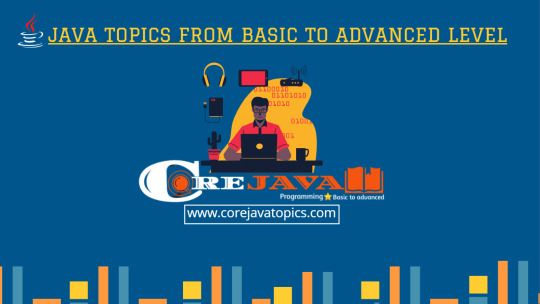
Attention Dear Reader, In this article, I will provide you a Complete Core Java Topics List & All concepts of java with step by step. How to learn java, when you need to start, what is the requirement to learn java, from where to start learning java,and Tools to Understand Java code. every basic thing I will include in this List of java.
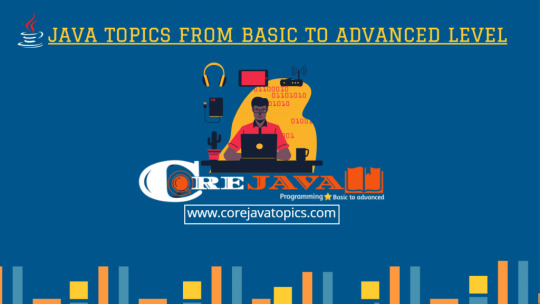
core java topics list Every beginner is a little bit confused, at the starting point before learning any programming language. But you no need to worry about it. Our aim to teach you to become a good programmer. In below you can start with lesson 1 or find out the topics manually. it’s your choice.
Complete Core Java Topics List.
Chapter. 1Full Basic Introduction of java.1.1What is java?1.2Features if java?1.3What is Software?1.4What are Programs?1.5Need to know about Platforms.1.6Object Orientation.1.7What are objects in java?1.8Class in java.1.9Keywords or Reserved words of java.1.10Identifiers in java.1.11Naming convention / coding Standard.1.12Association (Has-A Relationship).1.13Aggregation and Composition in java.1.14Java Compilation process.1.15WORA Architecture of java.1.16What is JVM, JRE and JDK in java?Chapter. 2Classes and Objects in Detail2.1How to create Class?2.2How to Create Objects?2.3Different ways to create objects in class.2.4object Reference / object Address.2.5Object States and Behavior.2.6Object Creation & Direct Initialization.2.7Object initialization using Reference.Chapter. 3Data Types in Java.3.1Java Primitive Data Types.3.2Java Non-Primitive Data Types.Chapter. 4Instance Method.4.1Types of methods in java.4.2Rules of Methods.4.3How to use methods in a class.Chapter. 5Class Loading in Java?5.1What is Class Loading.5.2Class Loading Steps.5.3Program Flow explanation.5.4"this" Keyword in java?Chapter. 6Variables in java.6.1Types of Variables.6.2Scope of variables.6.3Variable initialization.Chapter. 7Variable Shadowing in Java?Chapter. 8 Constructors in java.8.1Rules for creating java Constructors.8.2Types of Construstors.8.3Difference between Constructor and method in java.Chapter. 9Categories of methods in java.9.1Abstract Method in java.9.2Concrete Method in java.Chapter. 10Overloading in java.10.1Types if Overloading.10.2Advantages and Disadvantages of overloading.10.3Can we overload main( ) method in java?10.4Constructor Overloading in java.Chapter. 11Inheritance in java?11.1Types of Inheritance.11.2Terms used in inheritance.11.3The syntax of java inheritance.11.4How to use Inheritance in java/Chapter. 12Overriding in java.12.1Usage of java method Overriding.12.2Rules of method Overriding.12.3Importance of access modifiers in overriding.12.4Real example of method Overriding.12.5Difference between method overriding and overloading java.12.6"Super" keyword in java.Chapter. 13Constructor chaining in java.13.1Generalization in java with Example.Chapter. 14Type-Casting in java.14.1Primitive and Non-Primitive Casting in java.14.2Data Widening and Data Narrowing in java.14.3Up-Casting in java.14.4Down-Casting in java.14.5Characteristics of Up-Casting.Chapter. 15Garbage Collection.15.1Advantages of Garbage Collection.15.2How can an object be unreferanced in java?15.3Some examples of Garbage Collection in java.Chapter. 16Wrapper Class in java.16.1Uses of wrapper class in java.16.2How to Convert Primitive form to object form.16.3How to Convert String form to Primitive form.16.4Learn public static xxx parsexxx(Strings srop).16.5Autoboxing in java.16.6Unboxing in java.Chapter. 17Polymorphism in java?17.1Compile time polymorphism.17.2Runtime Polymorphism.Chapter. 18Packages in java?18.1Advantages of Packages in java.18.2Standard Package structure if java Program.18.3How to access package from another package?18.4Inbuilt package in java?18.5What are Access Modifiers In java.18.6Types of Access Modifires.Chapter. 19Encapsulation in java.19.1Advantages of Encapsulation in java?19.2Java Bean Specification or Guidelines.Chapter. 20Abstraction in java.20.1What are abstract methods in java?20.2Abstract Class in java?20.3Difference between Abstract class and Concrete class.20.4Similarities between Abstract and Concrete class?20.5Interface in java?20.6Why use java interface?20.7How to declare an interface in java?20.8Types of Interface in java?20.9What are the uses of Abstraction?20.10Purpose or Advantages of Abstraction.Chapter. 21Collection Framework in java?21.1What is collection in java?21.2What is framework in java?21.3Advantages of collection over an array in java.21.4Collection Framework Hierarchy in java.21.5Generics in java?21.6List Interface in java.21.7Methods of List Interfae in java.21.8ArrayList in java?21.9Vector in java.21.10Difference between ArrayList and Vector.21.11LinkedList in Java.21.12Difference between ArrayList and LinkedList.21.13Iterating Data from List.21.14foreach Loop in java.21.15Difference between for loop and foreach loop.21.16Set Interface in java.21.17Has-based Collection in java.21.18What are HashSet in java?21.19What are LinkedHashSet in java?21.20What are TreeSet in Java?21.21Iterator interface in java.21.22Iterator Methods in java.21.23ListIterator interface in java.Chapter. 22What are Map in java?22.1Map interface method in java.22.2What are HashMap in java?22.3What are LinkedHashMap in java?22.4What are TreeMap in java?22.5HashTable in java?22.6ShortedMap in java?22.7Difference between HashMap and Hashtable in java?22.8Comparable and Comparator in java?22.9Where Comparable and Comparator is used in java?22.10What is Comparable and Comparator interface in java?Chapter. 23Exception Handling in Java.23.1Exception Hierarchy in java.23.2Checked and Unchecked Exception in java?23.3Java Try Block?23.4java catch Block?23.5Multi-catch block in java?23.6Sequence of catch Block in java?23.7Finally Block in java?23.8"throws" keyword in java?23.9"throw" keyword in java?23.10Difference between throw and throws in java.23.11Custom and user defined exception in java?23.12Difference between final, finally and finalize in java?Chapter. 24Other Advanced Topics24.1Advanced Programming Java Concepts"👆This is the Complete Core Java Topics List"
How to Learn Java Step by Step?
We know that java is the most popular programming language on the internet. and also know this is the most important language for Android Development. with the help of java, we can develop an Android application. All over the topics will helps you to understated the basic concepts to learn java step by step. which helps you to understand the structure of any application backend code for app development. we recommended you to do more practice of all concepts and topics list. which is given over to becoming a good java developer. Must Read: What is Java, Full Introduction of Java for Beginners with Examples?
What is a Programming Language?
In short, Any software language. which is used in order to build a program is called a programming language. Java is also an object-oriented programming language. using that we can develop any type of software or web application. Is it easy to learn Java?
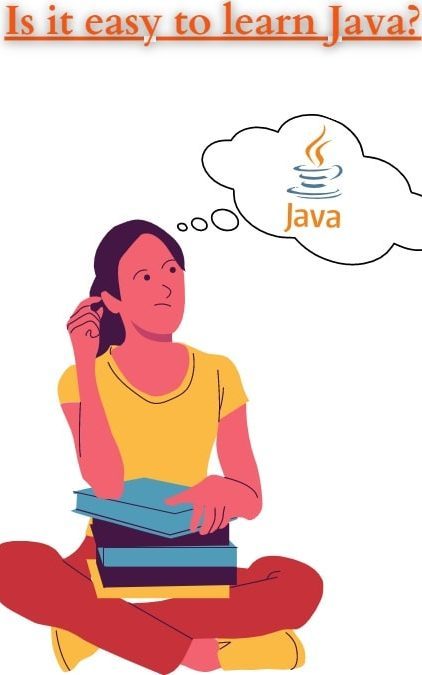
Is it easy to learn Java? My answer is "yes". Java is a beginner-friendly programming language. Because Every beginner easily learns java programming language. that means you don't need to give much effort to learn. you can start from a lower level to a higher level. Also, it provides you a user-friendly environment to develop software for clients. it has a garbage collector, which helps a lot to manage the memory space of your system for better performance. Tools to Understand Java Code. The market has lots of tools for programming. as a beginner, I will be recommending some Cool tools for Java Programming, which helps you to write and execute codes easily. 1. Eclipse: This is one of my favorite tools for practicing java codes. it will provide an integrated development environment for Java. Eclipse proved us so many interesting & modern features, modeling tools, testing tools. and frameworks development environment.
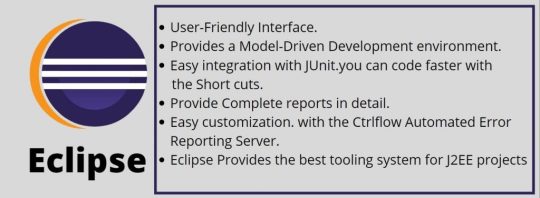
this Tools helps you to Understand Java Code. Here is Some Features of Eclipse: - User-Friendly Interface. - Provides a Model-Driven Development environment. - Easy integration with JUnit. - you can code faster with the Short-cuts. - Provide Complete reports in detail. - easy customization. with the Ctrlflow Automated Error Reporting Server. - Eclipse Provides the best tooling system for J2EE projects. - You can Download free. 2. JUnit: it is an open source unit for testing tool for Java programs. It is test-driven development and software deployment.

this Tools helps you to Understand Java Code. Here is Some Features of JUnit: - Prepare for input data and setup. - Some creation of fake objects. - Automatic Loading databases with a specific set of data - offers annotations, that test classes fixture, that's run before or after every test - support for write and execute tests on the platform. - Have some annotations to identify test methods - we can write codes faster, which increases the quality of codes and practices. - You can Download free Also Read: How to Download and Install Java JDK 15 in Windows 10 ? How longs to learn java? Every beginner student had pinged this question. How longs to learn java? now I will tell you according to the research. the speed of learning technologies and related subjects depends on the regularity of studies and the initial capacity of every student. I know you can do anything with your initial capacity level. but the regular study is a big responsibility of every student. I will recommend practicing daily to improve your programming skills and java concepts knowledge. and get stay motivated with your goals. definitely it will help you to get your first job. Note:- if any person has a little bit of programming knowledge, honestly it would take around 1 month to learn the basic concepts of java. if you are from a non-programming background but have a good knowledge of basic mathematics. definitely, you can also learn and understand fast all the concepts of java. it will all depend on your problem-solving skills and understanding concepts. Conclusions: At the starting of the article, I will provide you a complete core java topics list. it will help you to understand, where you need start, this is the basic step for a beginner. and also provides some tools for your practicing. I hope now you can start lean java with you motivation. Admin Word:- In this article, I provided A Complete Core Java Topics List. and also give your all pinged questions answers such as How to Learn Java Step by Step?, What is a Programming Language, Is it easy to learn Java, How longs to learn java. Also provides some free Tools to Understand Java Code which helps to Learn Java Step by Step. if you have any questions regarding this article please feel free to ask in the comment below of this article. Read the full article
0 notes
Text
[100% OFF] Master Java Collection Framework
[100% OFF] Master Java Collection Framework
What you Will learn ? Collection Interfaces Types of Data Structures ArrayList Class LinkedList Class Iterator, ListIterator and Spliterator Queue and Stack ArrayDeque Class PriorityQueue Class Map Classes How Hashing Works HashMap Class LinkedHashMap Class TreeMap Class EnumMap, WeakHashMap and IdentityHashMap Classes HashSet Class LinkedHashSet Class TreeSet Class Collection…
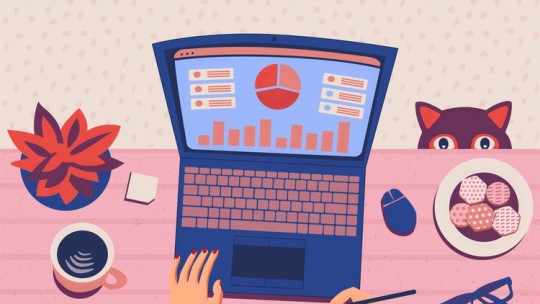
View On WordPress
0 notes
Link
Клас LinkedHashSet розширює клас HashSet не додаючи ніяких нових методів. Працює він дещо довше за HashSet проте зберігає порядок в якому елементи додаються до нього. Відповідно це дозволяє організувати послідовну ітерацію вставлення та витягнення елементів. https://ukr-technologies.blogspot.com/2020/04/linkedhashset.html
0 notes
Text
Java Collections: Problem Solving with Java Sets
Java Collections: Problem Solving with Java Sets
In this article we will examine an extremely scaled-down version of a real life problem that can be solved using Java Set. For appreciating the choices made in the sample program presented here, you need to understand the differences between HashSet, LinkedHashSet and TreeSet.
Problem Description
A web based startup wishes to reward (distribute bonus, if you like) some of its employees every year…
View On WordPress
0 notes